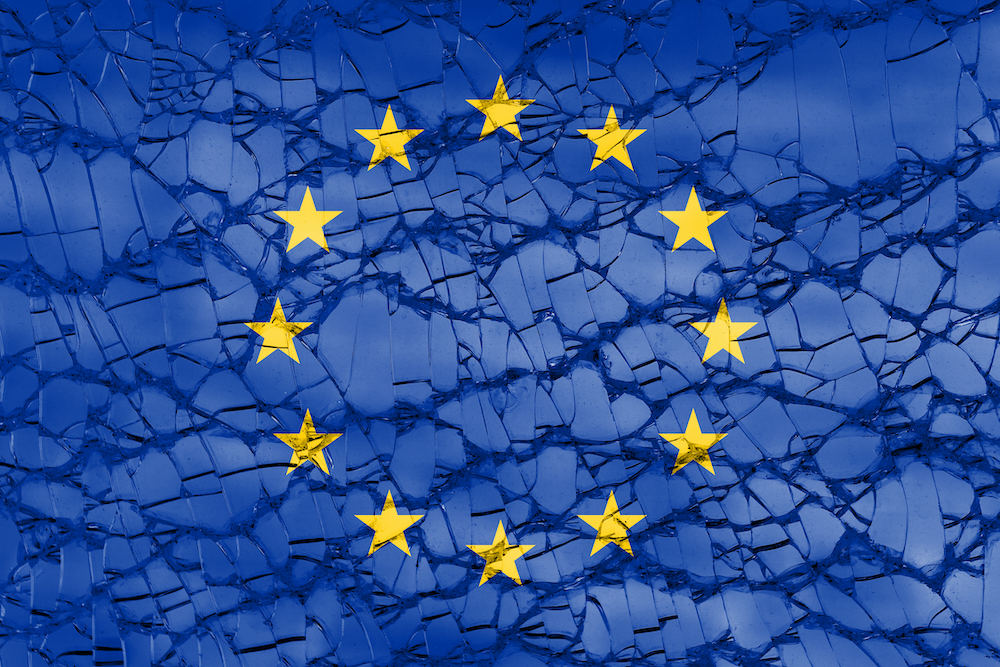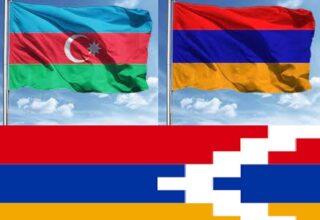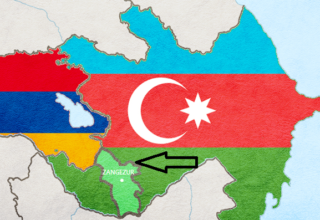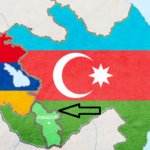Sitemize üye olarak beğendiğiniz içerikleri favorilerinize ekleyebilir, kendi ürettiğiniz ya da internet üzerinde beğendiğiniz içerikleri sitemizin ziyaretçilerine içerik gönder seçeneği ile sunabilirsiniz.
EPOSTA ADRESİNİZ
Zaten bir üyeliğiniz mevcut mu ? Giriş yapın
Lütfen geçerli bir mail adresi giriniz.
Lütfen üyelik ve gizlilik sözleşmesini onaylayın.
Sitemize üye olarak beğendiğiniz içerikleri favorilerinize ekleyebilir, kendi ürettiğiniz ya da internet üzerinde beğendiğiniz içerikleri sitemizin ziyaretçilerine içerik gönder seçeneği ile sunabilirsiniz.
Üyelerimize Özel Tüm Opsiyonlardan Kayıt Olarak Faydalanabilirsiniz

Sıradaki içerik:
ULUSLARARASI EKONOMİK ENTEGRASYONLARIN AVRUPA’YA YANSIMALARI
- Anasayfa
- ULESAM'dan Haberler
- INVESTIGATION OF NIGDE SODA POP’S CONTRIBUTIONS TO THE BRAND OF NIGDE AS A LOCAL BRAND
INVESTIGATION OF NIGDE SODA POP’S CONTRIBUTIONS TO THE BRAND OF NIGDE AS A LOCAL BRAND
241 okunma
—
01 Mayıs 2021 13:43

Niğde Ömer Halisdemir Üniversitesi İktisadi ve İdari Bilimler Fakültesi İktisat Tarihi Öğretim Üyesi
Niğde Ömer Halisdemir Üniversitesi Yüksek Lisans Öğrencisi
* Bu Makale İlk Defa; http://dergipark.org.tr/joeep de yayınlanmıştır.
Abstract
This research study is conducted to examine the contribution of Niğde Soda Pop to the city brand of Niğde as a local brand as well as to determine those contributions from Niğde residents’ point of view and to explicate the differentiation of Niğde residents’perceptions of NiğdeSoda Pop to the city brand of Niğde according to the descriptive characteristics of the residents.The survey questionnaire, developed by the researcher for this purpose, is applied to 668 participants residing in Niğde Province as of 2019. The results of the research study detect that NiğdeSoda Pop contributes moderately to the city brand of Niğde as a local initiative and brand. According to the age, marital status and educational level of the participants, there are differences in the perception regarding the contribution of Niğde Soda Pop to the city brand of NiğdeProvince, but there are no differences according to their gender, monthly income, and occupations.
Keywords: Niğde, Niğde Soda-Pop, Brand, City Brand, City Branding, Brand Image
Yerel Bir Marka Olarak Niğde Gazozu’nun Niğde Şehrinin Markasına Yaptığı Katkılarının İncelenmesi
Özet
Bu araştırma; Yerel bir marka olarak Niğde Gazozu’nun Niğde ili şehir markasına yaptığı katkıları, Niğde halkının bakış açısıyla belirlemek ve Niğde halkının tanımlayıcı özelliklerine göre Niğde Gazozu’nun Niğde ili şehir markasına yaptığı katkılara yönelik algılarının farklılaşma durumunu incelemek amacıyla gerçekleştirilmiştir. Amaç doğrultusunda araştırmacı tarafından geliştirilen anket formu, 2019 yılı içerisinde Niğde ilinde yaşayan 668 katılımcıya uygulanmıştır. Araştırma sonucunda; yerel bir girişim ve marka olarak Niğde Gazozu’nun Niğde ili şehir markasına orta düzeyde katkı sağladığı saptanmıştır. Katılımcıların yaşlarına, medeni durumlarına ve eğitim düzeylerine göre Niğde Gazozu’nun Niğde ili şehir markasına yaptığı katkılara yönelik algılarında farklılaşmalar saptanırken, cinsiyetlerine, aylık gelir durumlarına ve mesleklerine göre farklılaşmaların olmadığı belirlenmiştir.
Anahtar Kelimeler: Niğde, Niğde Gazozu, Marka, Şehir Markası, Şehir Markalaşması, Marka İmajı
1. Introduction
A brand is described as a name, sign, symbol, color, etc. or a certain combination of these, which defines producers’ goods and services and distinguishesthem from their competitors (Kotler and Armstrong, 2004: 248). As of today, it is observed that all commercial products and enterprises that wish to maintain their existence and to be at the forefront of competition are in the effort of branding.
Although branding has been a concept for consumer products for decades, the strategic branding concept of countries, cities, and regions was only present throughout the mid-1990s in order to enable the venues to compete more efficiently in a harshly competitive environment (Rizzi and Dioli, 2010: 303).As well as commercial products, cities also undergo branding to be preferred by target audiences.The city brand is briefly expressed as the implementation of the brand strategies applied to the products for the cities (İçyer,2010: 68).“City brand is a concept that is obtained as a result of the process which aims to be more marketable.The city brand, which has a wide impact from the economy to social activities, is generally a value formed by the impressions of the people or the media.The more a city affects people positively, the more a city brand it becomes” (Başpınar, 2015: 31).
City branding is a new discipline that uses information obtained from brand strategy and communication for the development of venues and cities. Along with this discipline, cities base their efforts on ensuring that all their strengths are properly coordinated in accordance with the market needs and that their strong, positive and city-specific reputations acquire continuous and permanent advantages (Tanlasa, 2005: 44).City branding aims to achieve one or more of the four core objectives: enhancing the export of city’s products, protecting its local enterprises from foreign competitors, attracting or development factors or retaining the existing ones and positioning the cities at local and national levels in economic, social and political terms(Papadopoulos, 2004: 36-37).
The city brand has a value that varies depending on the position of competitors, the distance to the brand cities and the geographical region.The brand city perceptions are directly affected by the fact that the competitors of a city in a certain field of activity are far away or the success in that area is low.However, it is necessary to keep the bar of success higher in order to succeed in wider geographies.For example, the city of fashion Milan has a worldwide reputation and is at the top of the list on fashion.If the city of Milan had a lesser reputation and did not meet the international success criteria, it would be considered a brand city only within the borders of Italy.In that case, Milan’s recognition in the fashion field outside Italy would have been at a relatively lower level and it would have had many compelling competitors in this field (Başpınar, 2015: 31).
City branding undertakes two important economic tasks such as ensuring the introduction of the strengths of cities in accordance with the needs of the market and supporting the city’s renewal strategies by creating economic revival when changes are needed (Seisdedos and Vaggione,2005: 2).Thanks to these tasks, cities protect the local or national structures of the city and,by the same token, increase their competitiveness by venturing in new sectors.
Economic reasons underlie beneath the efforts of cities to become a brand. Attracting global fixed capital investment as well as circulating capital as well as transportation, tourism, cultural and social activities through internationally recognized identities of cities has become a development strategy (Paul,2004: 575).
As cities have their own distinctive features, each city is a brand of its own.However, not all brands have the same value.Some brands consider the target audience more valuable, whereas others tend to assess it more worthless (Özdemir and Karaca,2009: 114).For example, a product with a label “Made in Germany” written on is likely to be demanded more in comparison to another a product with a label “Made in PRC” written on (IşıkandErdem,2015: 33).Likewise, the perceptions and images of the cities formed on individuals’ minds are different, designed to determine the values (Kavaratzis and Ashworth, 2005: 507).There are many factors that influence city branding. One of these factors is the branding of city-specific products. The quality and image of the product areperceived as an effective strategy that increases the brand value of the city.The thermal springs in Yalova, İnegöl meatballs of İnegöl district and lahmacunof Urfa province are unique examples (Apaydın, 2014: 27-28). On a global basis, Italy’s pizza and spaghetti would be given as proper examples.
The local brands and investments in the city and the city brand have a bilateral relationship. The brands and the volume of business opportunities they create are factors that infuse value to the city. Similarly, as a result of the city being a brand, the power of the brands and, in turn, the investment/business opportunities tend to increase. These two elements which trigger each other can be handled with the win-win principle. The local brand, which is decisive for the city brands, and the business areas they create are effective tools for rendering the city a center of attraction. The relationship between the city and the business community provides mutual benefits to both sides.The benefits of interactions between Munich and BMW, Tokyo and Sony, as well as the city and the business world, can be said to strengthen and exploit each other.Such successful enterprises attract significant investments and visitors to their venues and make internationally competitive (Başpınar,2015: 38-39).
In this research study, the contribution of Niğde Soda Pop to the branding of Niğde city as a local brand and investment in Niğdeis examined.
Niğde is a medium-sized city in Turkey’s Central Anatolia Region with a population of 306,730 (https://biruni.tuik.gov.tr).Niğde’s main livelihoodsare agriculture and livestockproduction (nigde.tarim.gov.tr).The industry in Niğde began to develop after the 1980s.There are textile and fruit juice production facilities in Niğde that can provide international branding (PolatveKılınç, 2008:4).One of these facilities is Niğde Soft Drinks and Food Industry Limited Company which has been producing soda pop under the brand of “NiğdeGazozu” (Niğde Soda Pop) since 1960.
As the results of short-, medium- and long-term planning made in the early 1980s, the establishment of today’s facilities was planned and built on an area of 5500 m2 in NiğdeOrganized Industrial Zone in 1992. Inthe 2000s, the facility went througha technological renovation and modernization applications were carried out. In 2003, it was certified by the Turkish Standards Institute and its trademark was registered. NiğdeSoda Pop, which was first exported to the United States in 2003, was exported to Azerbaijan in 2006. As of 2019, NiğdeSoda Pop continues its production with a fully automatic integrated facility that produces 10,000 bottles/hour. Niğde Soda Pop, identified with Niğde, is being soldin shopping malls and entertainment centers all over Turkey.
Many other national soda pop productions are being maintained in Turkey, but Niğde Soda Pop is preferred over themdue to its taste and aroma. It is stated that NiğdeSoda Pop has a special formula generated by years of experience in addition to the use of natural spring water and artificial sweetener in its production which makes it different from other soda pop brands (http://www.nigdegazozu.com.tr/hakkimizda.html). Although there are many national and global brands in the non-alcoholic beverage sector, NiğdeSoda Pop represents both the brand and the city of Niğde as the preferred beverage.
Although it has been observed that there has been an increase in the number of researches on the brand city, city brand and its image in the national and international literature throughout recent years, no research study has been conducted on the contribution of a local brand to the city brand.It is thought that this aspect of the research would introduce an idea to the relevant literature and city brand studies.
2. Methodology
2.1. Research Model
The research study is designed in the general survey model.“Survey models are suitable for research aiming to describe a situation that exists in the past or the present” (Karasar, 2011: 77).
2.2. Aim of The Study and Its Hypotheses
This research study aims to determine the contributions of NiğdeSoda Pop as a local brand to the city brand of Niğde from the point of view of Niğde residents.Another purpose of the study is to examine the differentiation of the perceptions of Niğde residents regarding the contributions of NiğdeSoda Pop to the city brand of Niğde.For these purposes, the following hypotheses are tested:
H1: Contributions of NiğdeSoda Pop to the city brand of Niğdediffer according to the age groups of the participants.
H2: Contributions of NiğdeSoda Pop to the city brand of Niğde differ according to the genders of the participants.
H3:According to the marital status of the participants, contributions of NiğdeSoda Pop to the city brand of Niğdediffer.
H4: According to the education level of the participants, contributions of NiğdeSoda Pop to the city brand of Niğdediffer.
H5: According to the monthly income levels of the participants, contributions of NiğdeSoda Pop to the city brand of Niğdediffer.
H6: Contributions of NiğdeSoda Pop to the city brand of Niğde vary according to the occupations of the participants.
2.3. Populationand Sample
The population of the study consists of individuals over 18 years of age living in Central Niğde.According to the address-based population registration system data, the central population of Niğde is 181,979 as of 2018 (https://biruni.tuik.gov.tr). Approximately 25% of the population is younger than 18 years of age.In this case, the sample size is determined as 136,484. In determining the sample size, the following are used by considering the required sample size (n = 661) with ± 5% sampling error in 99% confidence interval for this population (Salant and Dillman, 1994: 55);
- “n = N t2 p q / d2 (N-1) + t2pq
- N: Number of individuals in the target audience
- n: Number of individuals included in the sample
- p: Frequency of occurrence of the investigated event (probability of occurrence)
- q: Frequency of non-occurrence of the event under investigation (probability of non-occurrence)
- t: the theoretical value found in t-table at a certain level of significance
- d: Accepted ± sampling error according to the frequency of occurrence of the event.”
In order to obtain more general outcomes from survey results, the survey questionnaires are applied to 700 participants and 668 valid questionnaires are obtained.The descriptive characteristics of the sample group are presented in Table 1.
Table 1.Descriptive Characteristics of the Participants
| Groups | Frequency(n) | Percentage (%) |
| Age | ||
| 18-25 | 410 | 61.4 |
| 26-35 | 140 | 21.0 |
| 36-45 | 62 | 9.3 |
| 46 and older | 56 | 8.4 |
| Gender | ||
| Female | 332 | 49.7 |
| Male | 336 | 50.3 |
| Marital Status | ||
| Married | 182 | 27.2 |
| Single | 486 | 72.8 |
| Education Level | ||
| High School Degree or lower | 156 | 23.4 |
| Associate Degree | 70 | 10.5 |
| Undergraduate Degree | 360 | 53.9 |
| Graduate Degree | 82 | 12.3 |
| Monthly Income Level | ||
| 0-2000 TL | 330 | 49.4 |
| 2001-3000 TL | 114 | 17.1 |
| 3001-4000 TL | 80 | 12.0 |
| 4001-5000 TL | 66 | 9.9 |
| 5001 TL and higher | 78 | 11.7 |
| Occupation | ||
| Public Sector Employee | 114 | 17.1 |
| Private Sector Employee | 130 | 19.5 |
| Student | 366 | 54.8 |
| NiğdeSodapopEmployee | 58 | 8.7 |
2.4. Data Collection Tools
The data are collected by the survey questionnaire method. The survey questionnaire consists of two parts. In the first part, there are 6 multiple choice questions including participants’ age, gender, etc. to determine their descriptive characteristics. In the second part, there is a 5-point Likert-type scaleconsisting of 61 propositions for Contribution to the City Brand developed by the researcher.The reliability and validity testsfor the scale areperformed.The internal consistency coefficient “Cronbach’s Alpha” is calculated to measure the reliability of the scale.The overall reliability of the scale is found as alpha = 0.995.
The explanatory factor analysis method is utilized to determine the construct validity of the scale.As a result of the Barlett test (p = 0.000 <0.05), it is found that the variables included in the factor analysis are correlated. As a result of the test (KMO (Kaise-Mayer-Oklin value) = 0.978> 0.60), the sample size is found to be sufficient for the application of factor analysis.In the factor analysis application, the varimax method is chosen thus, it is provided that the structure of the relationship among the factors remained the same. As a result of the factor analysis, the variables are collected under 3 factors with a total variance of 84.383%.According to the alpha and the variance value, which is related to its reliability, it is understood that the Contribution to the City Brand scale is a valid and reliable tool. The factor structure of the scale is shown below.
Table2. Factor Structure of the Contribution to City Brand Scale
| Dimensions |
Factor Load |
| Perception of being national brand (Eigenvaule=46.669; ExplainedVariance=31.551; Alpha=0.992) | |
| I like NiğdeSoda-Pop very much | 0.824 |
| NiğdeSoda-Pop is delicious enough | 0.824 |
| Niğde Soda-Pop has the characteristic of being a brand | 0.816 |
| Niğde Soda-Pop can be distinguished from other sparkling beverages | 0.815 |
| Its participation in congresses, fairs, and exhibitions should be supported in order to make Niğde Soda-Pop more available in national and international markets | 0.808 |
| I think Niğde Soda-Pop has enough good quality | 0.796 |
| Niğde Soda-Pop is easily accessible | 0.781 |
| Niğde Soda-Pop has the characteristic of being a strong brand | 0.765 |
| Niğde Soda-Pop is a strong brand | 0.750 |
| Niğde Soda-Pop can compete with other sparkling beverages in terms of taste and quality | 0.749 |
| Niğde Soda-Pop is respectful to its customers | 0.744 |
| The most important feature that distinguishes Niğde Soda-Pop from other sparkling beverages is the halal certificate | 0.741 |
| Niğde Soda-Pop is a trademark | 0.733 |
| Being alcohol-free is the most important feature that separates Niğde Soda-Pop from other sparkling beverages | 0.709 |
| The promotion of Niğde Soda-Pop should be provided in order to promote Niğde and its surroundings in national markets and make it a brand city | 0.694 |
| Niğde Soda-Pop is a service-based brand | 0.674 |
| Niğde Soda-Pop is affected by economic criteria in the country | 0.672 |
| Niğde Soda-Pop has correctly chosen logos and slogans | 0.669 |
| Niğde Soda-Popcan be defined as the existence of potentials as a brand city | 0.651 |
| Compared to other sparkling beverages, Niğde Soda-Pop is more carbonated and contains less sugar | 0.647 |
| Niğde Soda-Pop is innovative enough in branding | 0.634 |
| Niğde Soda-Pop has a strong marketing strategy as a brand | 0.630 |
| It is thought that Niğde Soda-Pop provides sufficient brand context | 0.629 |
| Niğde Soda-Pop bottle attracts sufficient attention of the consumer | 0.616 |
| Niğde Soda-Pop contributes positively to both the residents of the city and the potential visitors, the tourists, and the stakeholders. | 0.601 |
| Its contribution to innovation and entrepreneurship (Eigenvaule=2.807; Explained Variance=28.553; Alpha=0.987) | |
| I think that the promotion of Niğde Soda-Pop is done in the national media at a sufficient level. | 0.831 |
| Local authorities and the private sector sufficiently promote Niğde Soda Pop as a city brand | 0.820 |
| I think that the promotion of Niğde Soda-Pop is sufficiently carried out by the local media | 0.775 |
| Niğde Soda-Pop is sufficiently involved in the branding process on the Internet | 0.769 |
| I think that Niğde Soda Pop is sufficiently introduced to ÖmerHalisdemir University students | 0.766 |
| The name of Niğde Soda Pop’s owner is well-known | 0.751 |
| ÖmerHalisdemir University strives to make Niğde soda a city brand | 0.731 |
| I think NiğdeSoda Pop has made enough innovation | 0.729 |
| I think NiğdeSoda Pop takes enough risks | 0.716 |
| It is sufficient for the sustainability of urban promotion of NiğdeSoda Pop | 0.712 |
| NiğdeSoda Pop uses sociocultural elements sufficiently to increase brand value | 0.688 |
| I think that Niğde Soda Pop has applied the concept of continuous innovations sufficiently in the corporate sense | 0.676 |
| NiğdeSoda Pop sufficiently uses historical elements in branding | 0.668 |
| NiğdeSoda Pop has sufficiently ensuredentrepreneurship | 0.662 |
| During the branding process of NiğdeSoda Pop, Niğde province has carried its identity and urban image to national and international level | 0.657 |
| I think that internal communication mechanisms are effective enough for the branding of NiğdeSoda Pop. | 0.649 |
| NiğdeSoda Pop uses enough physical properties in branding | 0.641 |
| I think that NiğdeSoda Pop is paying enough attention to the internal entrepreneurship factor in its corporate structure. | 0.615 |
| I think that ÖmerHalisdemir University can contribute to the economic development of NiğdeSoda Pop, employment creation, creation of brand value in general knowledge, production, technology transfer, management, etc. | 0.552 |
| Its contribution to development of Niğde (Eigenvalue=1.998; Explained Variance=24.279; Alpha=0.986) | |
| NiğdeSoda Pop can benefit from the advantages of the brand and increase its marketability | 0.753 |
| As a soda brand, NiğdeSoda Pop is a part of the city marketing process that serves to create a strong image of cities | 0.741 |
| NiğdeSoda Pop gives importance to branding concept | 0.734 |
| NiğdeSodaPop contributes to Niğdein becoming a brand city | 0.729 |
| NiğdeSoda Pop contributes to the marketing of Niğde as a city | 0.704 |
| NiğdeSoda Pop has made Niğde a competitive province | 0.696 |
| NiğdeSoda Pop associated its product with Niğde to influence its target audience | 0.695 |
| NiğdeSoda Pop provides value for urbanization and all kinds of city-related outputs during the branding process | 0.686 |
| NiğdeSoda Pop has been able to deliver the promises that create a real image that would identify with the province of Niğde | 0.673 |
| NiğdeSoda Pop establishes an emotional connection with customers by using Niğde’s attraction feature | 0.668 |
| NiğdeSoda Pop has succeeded to become a brand by using the unique characteristics of Niğde province | 0.668 |
| Technological development of Niğde province has an impact on the development of NiğdeSoda Pop | 0.665 |
| NiğdeSoda Pop contributes to Niğdebecoming the center of attraction | 0.632 |
| NiğdeSoda Popconstitutes an image of Niğde in the minds of individuals | 0.613 |
| NiğdeSoda Pop creates the appropriate image for the branding of Niğde | 0.601 |
| Branding of NiğdeSoda Pop reveals the potential of the city | 0.591 |
| The communication and promotion activities of NiğdeSoda Pop draw attention to Niğde province | 0.578 |
| Total Variance=84.383%; Cronbach’s Alpha Coefficient=0.995 | |
When calculating the scores of the factors in the scale, factor values are obtained by dividing the values of the items in the factor by the number of items (arithmetic mean).
2.5. Data Analysis
The data obtained from the study are analyzed using SPSS (Statistical Package for Social Sciences) for Windows 22.0.Upon evaluation of the data, frequency and percentage analyses are used to determine the descriptive characteristics of the students who participated in the research study, and average and standard deviation statistics are used to determine the perceptions of the participants about the contribution of Niğde Soda Pop to Niğde city brand.
The scores of scale dimensions are evaluated between 1 and 5. In order to calculate the distribution range, the formula Distribution range = Maximum value – Minimum value / Number of degrees is utilized. This range has a width of 4 points. This width is divided into five equal intervals and the limit values are determined as “very low (1.00-1.79), “low”(1.80-2.59), “medium”(2.60-3.39), “high” (3.40-4.19) and “very high”(4.20-5.00) and the findings are interpreted (Sümbüloğlu1993: 9).
One-way ANOVA test is used for testing the research hypotheses, for comparing the gender-related data obtained from the t-test, and to test the hypotheses of the other variables.After performing the ANOVA test, the Scheffe test is used as a complementary post-hoc analysis to determine the differences.The obtained findings are evaluated within a 95% confidence interval and ata 5% significance level.
3. Findings
Table 3 indicates the participants’ perceptions regarding the contribution of NiğdeSoda Pop to the city brand of Niğde.
Table3. Participants’ Perceptions of Niğde Soda Pop’s Contribution to Niğde City Brand
| N | Mean | St.Dev. | Min. | Max. | |
| Perception of Being National Brand | 668 | 3,224 | 1.394 | 1,000 | 5,000 |
| Its Contribution to Innovation and Entrepreneurship | 668 | 2,966 | 1.317 | 1,000 | 5,000 |
| Its Contribution to Development of Niğde | 668 | 3,224 | 1.364 | 1,000 | 5,000 |
| Its Contribution to Niğde City Brand (General) | 668 | 3,144 | 1.311 | 1,000 | 5,000 |
According to the data presented in Table 3, the mean value of the participants’ perception of Niğde Soda Pop being a national brand is 3,224 ± 1,394, the mean of “its contribution to innovation and entrepreneurship”is 2,966 ± 1,317, the mean of “its contribution to the development of Niğde” is 3,224 ± 1,364, and the mean of “its (general) contribution to city brand of Niğde” is 3,144 ± 1,311.In other words, the participants’ perceptions about the contribution of NiğdeSoda Pop to the city brand of Niğdeare at moderate levels.Table 4 indicates the results of the one-way analysis of variance (ANOVA) to test the hypothesis claiming that “H1: Contributions of NiğdeSoda-Pop to the city brand of Niğde province vary according to the age groups of the participants.”
Table4. Differentiation of Perceptions of Contribution of Niğde Soda Pop to Niğde City Brand According to Age Groups
| Group | N | Mean | St.Dev. | F | p | Diff. | |
| Perception of Being National Brand | 18-25 | 205 | 3,249 | 1.334 | 5.701 | 0.001 | 2>1
2>3 1>4 2>4 |
| 26-35 | 70 | 3,621 | 1.325 | ||||
| 36-45 | 31 | 2,854 | 1.457 | ||||
| 46 and older | 28 | 2,457 | 1.579 | ||||
| Its Contribution to Innovation andEntrepreneurship | 18-25 | 205 | 3,000 | 1.265 | 2.730 | 0.044 | 2>3
2>4 |
| 26-35 | 70 | 3,205 | 1.355 | ||||
| 36-45 | 31 | 2,628 | 1.211 | ||||
| 46 and older | 28 | 2,494 | 1.568 | ||||
| Its Contribution to Development of Niğde | 18-25 | 205 | 3,327 | 1.309 | 6.209 | 0.000 | 1>3
2>3 1>4 2>4 |
| 26-35 | 70 | 3,477 | 1.289 | ||||
| 36-45 | 31 | 2,693 | 1.409 | ||||
| 46 and older | 28 | 2,429 | 1.524 | ||||
| Its Contribution to NiğdeCity Brand (General) | 18-25 | 205 | 3,193 | 1.250 | 5.079 | 0.002 | 2>3
1>4 2>4 |
| 26-35 | 70 | 3,451 | 1.268 | ||||
| 36-45 | 31 | 2,739 | 1.326 | ||||
| 46 and older | 28 | 2,461 | 1.546 | ||||
| One-Way Analysis of Variance | |||||||
Table 4 indicates the results of a one-way analysis of variance to investigate the differentiation of the perceptions of the contribution of NiğdeSoda-Pop to the Niğde city brand according to the age groups of the participants.According to the age groups of the participants, there is a significant difference in perception of being a national brand (F(3, 330)=5.701; p=0.001<0.05).As a result of the Scheffe test conducted to determine the cause of the difference; it is determined that the perceptions of those aged 26-35 for Niğde Soda Pop being a national brand (x̄ = 3,621) are higher than of those aged 18-25 (x̄ = 3,249), 36-45, and 46 and older (x̄ = 2,457), whereas the perceptions of those aged 18-25 for Niğde Soda Pop being a national brand (x̄ = 3,249) are higher than of those aged 46 and older (x̄=2,457).
Participants’ contributions to innovation and entrepreneurship scores differ significantly according to age(F(3, 330)=2.730; p=0.044<0.05).The reason for the difference stems from the fact that the scores of the contribution to innovation and entrepreneurshipperceived by those aged 26-35 (x̄ = 3,205) and of those aged 36-45 years (x̄ = 2,628).It also stems from the fact that the scores of the contribution to innovation and entrepreneurship perceived by those aged 26-35 (x̄=3,205) are higher than those aged 46 and older (x̄ = 2,494).
The scores of the contribution to the development of Niğde differ significantly according to age(F(3, 330)=6.209; p=0.000<0.05). The reason for the difference stems from the fact that the contribution scores for the development of Niğde (x̄ = 3,327) perceived by those aged 18-25 are higher than those aged 36-45 (x̄ = 2,693).This is because the scores of contribution to the development of Niğde (x̄ = 3,477) perceived by those aged 26-35 are higher than those aged 36-45 (x̄ = 2,693). It stems from the fact that the scores of contribution to the development of Niğde (x̄ = 3,327) perceived by those aged 18-25 being higher than those aged 46 and older (x̄ = 2,429). It is also because the scores of the contribution to the development of Niğdeperceived by those aged 26-35 (x̄= 3,477) are higher than those aged 46 and older (x̄ = 2,429).
The overall scores of participants’ perception of city brand and image differ significantly according to age(F(3, 330)=5.079; p=0.002<0.05). The reason for the difference is because the general scores of the perception of those aged 26-35 forthe city brand and image (x̄ = 3,451) are higher than those aged 36-45 (x̄ = 2,739). This is because the general scores of the perception of those aged 18-25 for the city brand and image (x̄ = 3,193) are higher thanthose aged 46 and older (x̄ = 2,461).This is because the general scores of the perception of those aged 26-35 for the city brand and image (x̄ = 3,451) are higher than those aged 46 and older (x̄ = 2,461).
According to these obtained data, the hypothesis claiming that “H1: Contributions of NiğdeSoda-Pop to the city brand of Niğde differ according to the age groups of the participants.” is verified and accepted. Table 5 presents the results of the Independent groups’ T-test conducted to test the hypothesis “H2: Contribution of Niğde Soda Pop to the city brand of Niğde differ according to the gender of the participants”.
Table5. Differentiation of Perception Scores of City Brand and Image According to Gender
| Group | N | Mean | St.Dev. | t | sd | p | |
| Perception of Being National Brand | Female | 332 | 3,318 | 1.331 | 1.231 | 332 | 0.219 |
| Male | 336 | 3,131 | 1.452 | ||||
| Its Contribution to Innovation and Entrepreneurship | Female | 332 | 3,043 | 1.286 | 1.054 | 332 | 0.293 |
| Male | 336 | 2,891 | 1.347 | ||||
| Its Contribution to Development of Niğde | Female | 332 | 3,345 | 1.317 | 1.617 | 332 | 0.107 |
| Male | 336 | 3,104 | 1.403 | ||||
| Its Contribution to Niğde City Brand (General) | Female | 332 | 3,240 | 1.259 | 1.335 | 332 | 0.183 |
| Male | 336 | 3,049 | 1.358 | ||||
| Independent Groups T-Test | |||||||
Upon examining the data presented in Table 5; it is determined that the (general) scores of participants’ perception for Niğde Soda Pop of being a national brand, its contribution to innovation and entrepreneurship, its contribution to the development of Niğde, city brand and image do not differ significantly according to gender variable (p> 0.05). Accordingly, the hypothesis “H2: Contributions of NiğdeSoda-Pop to the city brand of Niğde province vary according to the gender of the participants” is not verified and rejected.
Table 6 presents the results of independent group T-Test performed to test the hypothesis claiming that “H3: Contributions of NiğdeSoda-Pop to the city brand of Niğde province differ according to the marital status of the participants.”.
Table6. Differentiation of Perception Scores for City Brand and Image According to Marital Status
| Group | N | Mean | St.Dev. | t | sd | p | |
| Perception of Being National Brand | Married | 182 | 3,005 | 1.567 | -1.764 | 332 | 0.105 |
| Single | 486 | 3,306 | 1.317 | ||||
| Its Contribution to Innovation and Entrepreneurship | Married | 182 | 2,825 | 1.458 | -1.196 | 332 | 0.265 |
| Single | 486 | 3,019 | 1.259 | ||||
| Its Contribution to Development of Niğde | Married | 182 | 2,864 | 1.517 | -2.985 | 332 | 0.006 |
| Single | 486 | 3,359 | 1.279 | ||||
| Its Contribution to Niğde City Brand (General) | Married | 182 | 2,910 | 1.481 | -2.005 | 332 | 0.067 |
| Single | 486 | 3,231 | 1.233 |
Upon examining the data presented in Table 6; the scores of contribution to the development of Niğde differ significantly according to the marital status of the participants (t(332)=-2.985; p=0.006<0.05). The scores of single participants’perception for contribution to the development of Niğde (x̄ = 3,359) are found to be higher than of married people (x̄ = 2,864).The overall scores of participants’ perception of being a national brand, contribution to innovation and entrepreneurship, and contribution to the city brand (General) do not differ significantly according to the marital status variable (p> 0.05).According to these obtained data, the hypothesis “H3: According to the marital status of the participants, contributions of Niğde Soda Pop to the city brand of Niğde differ” is verified and accepted in terms of the Contribution to the Development of Niğde dimension, whereas it is rejected in terms of other dimensions. Table 7 presents the results of the one-way analysis of variance (ANOVA) to test the hypothesis “H4: According to the education level of the participants, contributions of Niğde Soda Pop to the city brand of Niğde differ”.
Table7. Differentiation of Participants’ Perceptions of Contribution to City Brand According to Monthly Income Levels
| Group | N | Mean | St.Dev. | F | p | |
| Perception of Being National Brand | 0-1000 TL | 330 | 3,205 | 1.347 | 0.207 | 0.934 |
| 1001-2000 TL | 114 | 3,211 | 1.473 | |||
| 2001-3000 TL | 80 | 3,112 | 1.500 | |||
| 3001-4000 TL | 66 | 3,379 | 1.518 | |||
| 4001 TL and higher | 78 | 3,306 | 1.305 | |||
| Its Contribution to Innovation and Entrepreneurship | 0-1000 TL | 330 | 2,964 | 1.258 | 0.206 | 0.935 |
| 1001-2000 TL | 114 | 2,955 | 1.432 | |||
| 2001-3000 TL | 80 | 2,921 | 1.332 | |||
| 3001-4000 TL | 66 | 3,148 | 1.520 | |||
| 4001 TL and higher | 78 | 2,885 | 1.243 | |||
| Its Contribution to Development of Niğde | 0-1000 TL | 330 | 3,305 | 1.315 | 0.572 | 0.683 |
| 1001-2000 TL | 114 | 3,207 | 1.444 | |||
| 2001-3000 TL | 80 | 2,944 | 1.439 | |||
| 3001-4000 TL | 66 | 3,235 | 1.504 | |||
| 4001 TL and higher | 78 | 3,186 | 1.275 | |||
| Its Contribution to Niğde City Brand (General) | 0-1000 TL | 330 | 3,158 | 1.252 | 0.188 | 0.944 |
| 1001-2000 TL | 114 | 3,130 | 1.405 | |||
| 2001-3000 TL | 80 | 3,006 | 1.394 | |||
| 3001-4000 TL | 66 | 3,267 | 1.486 | |||
| 4001 TL and higher | 78 | 3,141 | 1.220 |
Upon examining the data presented in Table 7; it is determined the (general) scores of participants’ perception for Niğde Soda Pop of being a national brand, its contribution to innovation and entrepreneurship, its contribution to the development of Niğde, city brand and image do not differ significantly according to monthly income level variable (p> 0.05).According to these obtained data, the hypothesis “H4: According to the education level of the participants, contributions of Niğde Soda Pop to the city brand of Niğde differ”is rejected and cannot be verified.Table 8 presentsthe results of one-way analysis of variance (ANOVA) to test the hypothesis “H5: According to the monthly income levels of the participants, contributions of Niğde Soda Pop to the city brand of Niğde differ”.
Table8. Differentiation of Perception Scores for City Brand and Image According to Education Level
| Group | N | Mean | St.Dev. | F | p | Diff. | |
| Perception of Being National Brand | High School Degree and lower | 156 | 2,813 | 1.562 | 4.414 | 0.005 | 2>1
3>1 4>1 |
| Associate Degree | 70 | 3,465 | 1.521 | ||||
| Undergraduate Degree | 360 | 3,244 | 1.321 | ||||
| Graduate Degree | 82 | 3,710 | 1.037 | ||||
| Its Contribution to Innovation and Entrepreneurship | High School Degree and lower | 156 | 2,771 | 1.503 | 1.864 | 0.135 | |
| Associate Degree | 70 | 3,400 | 1.413 | ||||
| Undergraduate Degree | 360 | 2,957 | 1.239 | ||||
| Graduate Degree | 82 | 3,005 | 1.131 | ||||
| Its Contribution to Development of Niğde | High School Degree and lower | 156 | 2,835 | 1.561 | 3.614 | 0.014 | 2>1
3>1 4>1 |
| Associate Degree | 70 | 3,444 | 1.577 | ||||
| Undergraduate Degree | 360 | 3,263 | 1.283 | ||||
| Graduate Degree | 82 | 3,604 | 0.907 | ||||
| Its Contribution to Niğde City Brand (General) | High School Degree and lower | 156 | 2,806 | 1.521 | 3.186 | 0.024 | 2>1
3>1 4>1 |
| Associate Degree | 70 | 3,439 | 1.454 | ||||
| Undergraduate Degree | 360 | 3,160 | 1.226 | ||||
| Graduate Degree | 82 | 3,461 | 0.963 |
Upon examining the data in Table 8; it is determined that the participants’ perception levels of being a national brand according to their education levels significantly differ (F(3, 330)=4.414; p=0.005<0.05). The reasons for the differenceinclude;
- Associate degree-holding individuals’ perception level of being a national brand (x̄ = 3,465) is higher than high school degree-holding individuals’ perception level of being a national brand (x̄ = 2,813).
- Undergraduate degree-holding individuals’ perception scores of being a national brand (x̄ = 3,244) are higher than high school degree-holding individuals’ perception scores of being a national brand (x̄ = 2,813).
- Graduate degree-holding individuals’ perception scores of being a national brand (x̄ = 3,710) are higher than high school degree-holding individuals’ perception scores of being a national brand (x̄= 2,813).
- According to the education level of the participants’ scores of their contributions to the development of Niğde differ significantly(F(3, 330)=3.614; p=0.014<0.05). The reasons for such difference are as follows;
- Associate degree-holding individuals’ perception scores of the contribution to the development of Niğde (x̄ = 3,444) are higher thanthose with high school degrees or less (x̄ = 2,835).
- Undergraduate degree-holding individuals’ perception scores of the contribution to the development of Niğde(x̄=3,263), are higher than those with high school degrees or less (x̄=2,835).
- Graduate degree-holding individuals’ perception scores of the contribution to the development of Niğde(x̄=3,604), are higher than those with high school degrees or less (x̄=2,835).
- According to the education level of the participants’ overall scores of perception towards city brand and image differ significantly (F(3, 330)=3.186; p=0.024<0.05). The reasons for such difference are as follows;
- Associate degree-holding individuals’ perception scores regarding the city brand and image (x̄=3,439) are higher than those with high school degrees or less (x̄=2,806).
- Undergraduate degree-holding individuals’ perception scores regarding the city brand and image (x̄=3,160) are higher than those with high school degrees or less (x̄=2,806).
- Graduate degree-holding individuals’ perception scores regarding the city brand and image (x̄=3,461) are higher than those with high school degrees or less (x̄=2,806).
The scores of participants’ contribution to innovation and entrepreneurship do not significantly differ according to the education level variable (p> 0.05).According to these obtained data, the hypothesis“H5: According to the monthly income levels of the participants, contributions of Niğde Soda Pop to the city brand of Niğde differ”is validated and accepted outside the contribution to innovation and entrepreneurship.
Table 9 presents the results of one-way analysis of variance (ANOVA) to test the hypothesis “H5: According to the monthly income levels of the participants, contributions of Niğde Soda Pop to the city brand of Niğde differ”.
Table9. Differentiation of Perception Scores for City Brand and Image According to Occupation
| Group | N | Mean | St.Dev. | F | p | |
| Perception of Being National Brand | Public Sector Employee | 114 | 3,137 | 1.353 | 0.640 | 0.590 |
| Private Sector Employee | 130 | 3,331 | 1.583 | |||
| Student | 366 | 3,258 | 1.277 | |||
| Other | 58 | 2,939 | 1.725 | |||
| Its Contribution to Innovation and Entrepreneurship | Public Sector Employee | 114 | 2,799 | 1.275 | 0.725 | 0.537 |
| Private Sector Employee | 130 | 3,147 | 1.515 | |||
| Student | 366 | 2,962 | 1.194 | |||
| Other | 58 | 2,918 | 1.652 | |||
| Its Contribution to Development of Niğde | Public Sector Employee | 114 | 3,101 | 1.328 | 1.236 | 0.297 |
| Private Sector Employee | 130 | 3,177 | 1.574 | |||
| Student | 366 | 3,335 | 1.233 | |||
| Other | 58 | 2,870 | 1.675 | |||
| Its Contribution to Niğde City Brand (General) | Public Sector Employee | 114 | 3,022 | 1.282 | 0.624 | 0.600 |
| Private Sector Employee | 130 | 3,231 | 1.519 | |||
| Student | 366 | 3,187 | 1.174 | |||
| Other | 58 | 2,914 | 1.677 |
Upon examining the data in Table 9; it is seen that overall scores of participants’ perception of being a national brand, contribution to innovation and entrepreneurship, contribution to the development of Niğde, and perception of city brand and image do not differ significantly according to occupation variable (p> 0.05).According to these data, the hypothesis “H6: The contributions of NiğdeSoda-Pop to the city brand of Niğde province differ according to the occupations of the participants” isrejected.
4. Conclusion and Suggestions
The following results are obtained from the study conducted to determine the contributions of NiğdeSoda Pop as a local brand to the city brand of Niğde from the point of view of Niğderesidents and to examine the differentiation of the perceptions of NiğdeSoda Pop’s contributions to the city brand of Niğde according to the descriptive characteristics of Niğde residents:
In 2019, 668 people living inNiğde province participated in the study. The contributions of NiğdeSoda Pop as a local brand to the city brand of Niğdeprovinceare examined in terms of dimensions such as “the perception of being a national brand”, “the contribution to the development of Niğde”, and “the contribution (overall) to the city brand of Niğde” in the study.The level of participants’ perception ofall dimensions is found to be moderate. The lowest perceptions are pertinent to its “Contribution to Innovation and Entrepreneurship” dimension of Niğde Soda Pop, whereas the highest perceptions are pertinent to its “Contribution (Overal) to the City Brand of Niğde” dimension. Consequently, Niğde Soda Pop contributes to the city brand of Niğde at a moderate level according to the participant perceptions. In order to boost its contribution to the city brand of Niğde, the city where it was born as a local initiative and a national brand exported worldwide, national and international advertisements of NiğdeSoda Pop should serve its recognition and reputation.It may be interesting to include celebrities from different fields identified with Niğde in national advertisements.
According to the descriptive characteristics of the participants, it is also questioned whether or not there is a difference in the perceptions of NiğdeSoda Pop’s contributions to the city brand of Niğde.It is determined that the perceptions of the participants regarding the contributions of NiğdeSoda Pop to the city brand of Niğde differ.Accordingly, perceptions of participants under 35 years of age are detected to be higher than of older age participants.It is thought that younger individuals are more active in their social lives compared to older ones, and the opportunities of encountering Niğde Soda within their environments are positively reflected in their perceptions.
It is detected that there is no difference in the perceptions of the participants regarding the contributions of NiğdeSoda Pop to the city brand of Niğde. In other words, it is thought that females, as well as male participants,perceive that NiğdeSoda Pop contributes to the city brand of Niğde at a similar level.
In terms of the marital status of the participants, only the difference in contribution to the development of Niğdeis determined.The single participants tend to perceive that NiğdeSoda Pop contributes more to the development of Niğdein comparison to the married ones, whereas the perceptions of married and single participants are similar to each other in other dimensions.
According to the monthly income levels of the participants, no difference in their perceptions regarding the contributions of NiğdeSoda Pop to the city brand of Niğde is detected.In other words, participants with different income levels have similar perceptions of the contribution of NiğdeSoda Pop to the city brand of Niğde.
According to the educational background of the participants, it is determined that the perception of NiğdeSoda Pop’s contributions to the city brand of Niğde besidesthe contribution of innovation and entrepreneurship differ.Perceptions of the participants with high school (or lower) degrees towards Niğde Soda Pop being a national brand, its contributions to the development of Niğde and to the city brand (general) dimensions are lower than those participants with higher education levels.It is thought that individuals are more conscious about their perceptions regarding the brand throughout the educational life following high school graduation and such awareness is positively reflected in the research results.
This research study is limited to the contributions of NiğdeSoda Pop as a local initiative to the city brand of Niğde and the opinions of 668 participants. Similar studies can be conducted in terms of the contribution of local enterprises in different provinces to the city brand of the province.On the other hand, if national initiatives of local enterprises and brands are supported by the government in terms of corporate development, advertising promotion and image; their contributions to the city and the country would accelerate.
References
Apaydın, F. (2014). ŞehirPazarlaması. Ankara: Nobel Yayıncılık.
Başpınar, Ok. (2015). ŞehirMarkalaşmasıve Ankara Örneği.UzmanlıkTezi. Ankara: Türk Patent EnstitüsüMarkalarDairesiBaşkanlığı.
http://www.nigdegazozu.com.tr/hakkimizda.html (Access:10.08. 2019).
https://biruni.tuik.gov.tr/medas/?kn=95&locale=tr(Access:05.08.2019)
İçyer, A. (2010). Marka Kent OluşturmaAçısındanStratejik Kent Yönetimi.YüksekLisansTezi. Karaman: KaramanoğluMehmetbeyÜniversitesiSosyalBilimlerEnstitüsü.
Işık, M., &Erdem, A. (2015). NasılMarkaŞehirOlunur?.Konya: EğitimYayınevi.
Karasar, N. (2011). BilimselAraştırmaYöntemleri. Ankara: Nobel Yayıncılık,
Kavaratzis, M., &Ashworth, G. (2005). City Branding: An effective assertion of identity or a transitory marketing trick.TijdschriftVoorEconomischeenSocialeGeografic,96 (5), 506-514.
Kotler, P., &Armstrong, G. (2004). Principles of Marketing. New Jersey: Pearson-Prentice Hall Education International.
nigde.tarim.gov.tr (Access:15.08.2019)
Özdemir, Ş., &Karaca, Y. (2009). Kent markasıvemarkaimajınınölümü: Afyonkarahisarkentiimajıüzerinebiraraştırma. AfyonKocatepeÜniversitesi İ.İ.B.F. Dergisi,11 (2), 113-134.
Papadopoulos, N. (2004). Place anding: Evolution, meaning and implications. Place Branding,1(1), 36-49.
Paul, D. E. (2004).World cities as hegemonic projects: The politics of global imagineering in montreal. political Geography, 23 (5), 571-596.
Polat, C., &Kılınç, N. (2008). SayılarlaNiğdeNiğde. Sosyo-EkonomikRaporu 2008, Niğde: NiğdeTicaretveSanayiOdası.
Rizzi, P.,&Dioli, I. (2010). Strategic planning, place marketing and city branding: The Italian Case. Journal of Town & City Management, 1 (3), 300-317.
Salant, P., &Dillman, D.(1994). How to Conduct Your Own Survey. John Wiley & Sons, Inc, Newyork.
Seisdedos, G.,&Vaggione, P. (2005). The City Branding Processes: The Case of Madrid.41st ISoCaRP Congress 2005.
Sümbüloğlu, K. (1993). Biyoistatistik. Ankara: ÖzdemirYayıncılık.
Tanlasa, B.T. (2005). Kentlerdeşirketlergibirekabetiçinde. Marketing Türkiye,(83), 41-58.
Benzer İçerikler
- Site İçi Yorumlar






























Yorum Yaz